April opens the flower season
Article from the section “Calendar of work for a gardener, gardener and florist”
We didn’t have much hope for March, but in April we expect warmth from the first days. I would like to make sure as soon as possible that our favorite perennials overwintered safely, despite the winter cold and the cold wind of March. Our hands are tired of working on the ground, our eyes are tired of the gray despondency around...
What kind of work awaits flower growers in April?
Your flower garden: work of the month.
In April, at the dacha we are greeted by the first flowers: crocuses, marigolds, blueberries, breaking through last year’s foliage that had been compacted over the winter.
Before our eyes, the tulip leaves rise higher and higher, between which the sharp noses of the buds can be seen. To ensure that the tulips have tall flower stalks and large glasses, we feed the bulbous plants with nitrogen fertilizers, loosen the soil and, when necessary, water them.
Let's remove the foliage that covered our perennials: let the sun wake them up faster. When the soil warms up, it can be covered again to prevent it from drying out and overheating. Forecasters threaten that there will be no spring: we will immediately move from winter to summer.
Help the roses
Having freed the roses from their winter shelter, we throw non-woven material over them: the sun can destroy the shoots that have become unaccustomed to light and wind over the winter. Let the soil around the bushes warm up, the roots will begin to work, and then the light-protective “umbrella” can be removed from the roses.
We trim the shoots of hybrid tea, polyanthus and floribunda roses to well-wintered wood. We cut off only the frozen ends of park roses.
Take care of other colors too
Let us not leave filamentous yuccas, holly-leaved mahonias, and other plants that overwinter with green leaves without protection from the sun. Spruce, thuja, and junipers need to be protected from burning needles.
When the perennials begin to grow, we look at which of them need to be immediately divided and replanted. This does not apply to plants that bloom in spring or early summer. We will begin the work of transplanting and dividing them in the fall. But it is advisable to deal with perennial asters, sedums, and chrysanthemums in April.
We will divide and replant Korean chrysanthemum bushes, even if they are only two years old. If this is not done, the bushes will “sprout” many thin shoots and “fall apart” from the first strong wind even before flowering begins.
We divide the dug up bush into parts with one or two young shoots. The delenki will grow quickly and will be very decorative this season.
We cut out weak shoots from adult delphinium bushes. It’s a pity, but this must be done in order to get spectacular inflorescences - tall, with large flowers.
In each plant we leave 2-3 of the strongest shoots, and the rest, while they are only 5-8 cm high, are cut off at the very root collar, treated with a growth stimulator and planted in cuttings for rooting. Cover the cuttings with a 5-centimeter layer of clean sand.
Plant new plants in April
We will try to plant roses and ornamental shrubs as early as possible. And again, forgetting about the word “sorry,” we prune the planted bushes so that the above-ground part draws less juice from the roots damaged during digging in the nursery.
If you regret it and do not shorten the shoots, the plant will take a very long time to “come to its senses” and may die.
Short-pruned plants both take root and grow faster than unpruned ones.
Sow annuals in the ground
In April, we already sow annuals in the garden: heat-loving plants (tagetes, zinnias, petunias, arctotis, amaranth, celosia, balsam, dahlia, etc.) are sown under a film on arches.
We do not add humus to the soil of nurseries to prevent seedlings from becoming infected with blackleg. On warm days, be sure to ventilate the crops.
We sow scabiosa, iberis, eschscholzia, cornflower, annual chrysanthemum, nigella and other cold-resistant annuals in a permanent place in April.Covering an area of cold-hardy annuals after sowing can only be done to keep the soil moist until germination.
Many of us love the Chinese aster (annual), and we already have seedlings growing on our windowsills. But we will still sow it in April (as soon as the soil allows) also in the ground, selecting disease-resistant varieties.
Asters without seedlings will bloom a little later than seedlings, but they will decorate the garden in the fall for longer. And they resist diseases better, and form more lush bushes.
Don't forget about the seedlings in the room
The seedlings in the room also need our care. Once again we feed the flowers of February sowing: 2-3 g of complex fertilizer per liter of water. We carefully water the fertilizer solutions, trying not to wet the stems and leaves. We combine fertilizing with watering.
We plant seedlings sown in March into separate cups, cassettes or seedling boxes (small ones - 2.5-3 cm apart, large ones - 4-5 cm apart).
About two weeks before planting seedlings in open ground, we begin to harden them. This must be done so as not to ruin the plants grown with such difficulty. We take the seedlings out onto the loggia, balcony, veranda, shading them from direct sun for the first days and protecting them from the wind.
In April, you can plant seedlings of Shabot carnation, leftflower, and sweet peas in open ground: they can withstand temperatures down to minus 5 degrees.
At the beginning of April, we lay out dahlia tuber roots for germination.
Before germination, we wash the nests of tuber roots, cut out the damaged areas, soak them in a pink solution of potassium permanganate for 10-15 minutes, treat them with a growth stimulator and lay them tightly together on a layer of damp peat or pre-scalded sawdust.
We fill the top of the nest of tuber roots with substrate, leaving the root collar open. We find a bright place for dahlias. After the growth points of the stems are outlined, we divide the nests with a sharp knife so that each tuber root has 1-2 sprouts and part of the old stem.
The divisions can be planted in the ground at the end of the month, providing shelter in case of return frosts.
Sprouted canna rhizomes will also bloom earlier.
In April, we plant gladioli corms in the ground, finding a place for them where they have not been grown for several years. Before planting, we clean the corms and treat them against thrips in an insecticide solution. Sick and old (flat-bottomed) corms are discarded.
Start landscaping balconies and loggias
In April you can start landscaping your balcony. Plant, for example, pansies and daisies. If you don’t have your own seedlings, we’ll buy a few flowering bushes at the market or in a store. How much joy “big-eyed” flowers will bring in spring.
Of course, these lovers of cool weather will not be able to withstand the summer heat on the balcony. Having carefully dug the flowers out of the box, in June we will take them to the dacha, and as a replacement we will plant persistent pelargoniums and petunias in balcony containers.
By the way, when planting Korean chrysanthemums in the garden, we will select one or two bushes of low varieties for landscaping the balcony. In the summer we will bury the containers in the garden, and in the fall, when the chrysanthemums bloom in them, we will bring them home and decorate the balcony.
Here chrysanthemums will bloom longer than in the garden: frosts always come to the city later than to our summer cottages.
April work with indoor flowers
In April, we finish replanting and transferring indoor plants that need it (roots appear from the drainage holes and on the surface of the soil; the soil is covered with a whitish coating of salts and dries out quickly).
Transplantation at a later date will be more painful for plants. There is no way to replant, at least replace it with fresh topsoil in pots. Transplanted plants can be watered with a zircon solution or treated along the crown with a solution of epin-extra.
We continue to feed indoor plants. After transplanting, we begin feeding about three weeks later, when the plants resume growth.
N. ALEXEEVA
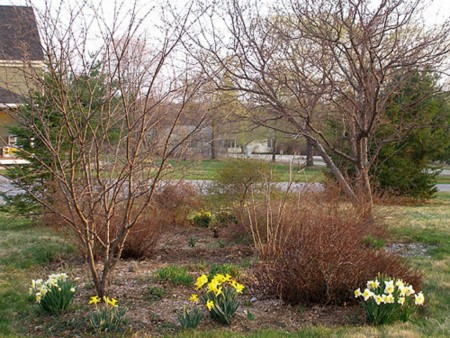
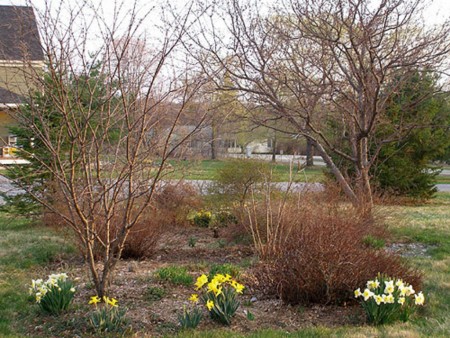
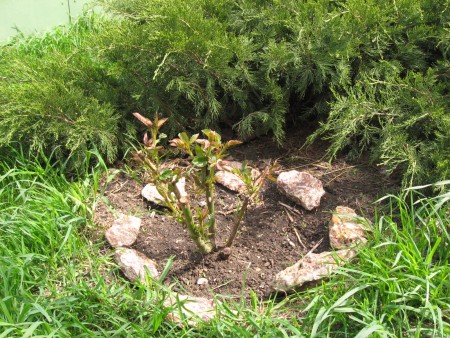
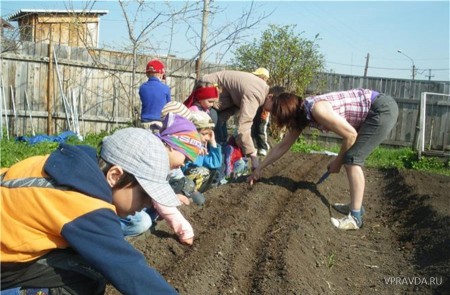
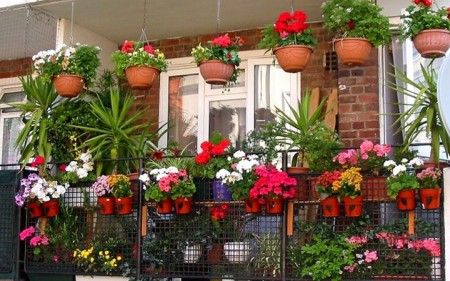

 (11 ratings, average: 4,73 out of 5)
(11 ratings, average: 4,73 out of 5) CUCUMBERS NEVER GET SICK, I'VE BEEN USING ONLY THIS FOR 40 YEARS! I SHARE A SECRET WITH YOU, CUCUMBERS ARE LIKE THE PICTURE!
CUCUMBERS NEVER GET SICK, I'VE BEEN USING ONLY THIS FOR 40 YEARS! I SHARE A SECRET WITH YOU, CUCUMBERS ARE LIKE THE PICTURE! You can dig a bucket of potatoes from each bush. Do you think these are fairy tales? Watch the video
You can dig a bucket of potatoes from each bush. Do you think these are fairy tales? Watch the video
 How our fellow gardeners work in Korea. There is a lot to learn and just fun to watch.
How our fellow gardeners work in Korea. There is a lot to learn and just fun to watch. Eye trainer. The author claims that with daily viewing, vision is restored. They don't charge money for views.
Eye trainer. The author claims that with daily viewing, vision is restored. They don't charge money for views. A 3-ingredient cake recipe in 30 minutes is better than Napoleon. Simple and very tasty.
A 3-ingredient cake recipe in 30 minutes is better than Napoleon. Simple and very tasty. Therapeutic exercises for cervical osteochondrosis.A complete set of exercises.
Therapeutic exercises for cervical osteochondrosis.A complete set of exercises. Which indoor plants match your zodiac sign?
Which indoor plants match your zodiac sign? What about them? Excursion to German dachas.
What about them? Excursion to German dachas.